Downtown Surrey BIA shifts playing field by dismissing SkyTrain in study
- Media Release
-
SkyTrain for Surrey press team
- December 4, 2011
The Downtown Surrey Business Improvement Association’s recently commissioned transportation study claims to “level the playing field” by calling on the City of Surrey to develop a plan to build light rail instead of expanding the SkyTrain system.
But in reality, the study shifts the playing field by excluding SkyTrain expansion on factually misleading grounds.
The study suggests that light rail “represents the most appropriate investment opportunity for communities to support overall vehicle trip reductions” and is the “most cost-effective transportation available”. As its only source, the study cites Dr. Patrick Condon—a UBC professor of landscape architecture and a “light rail expert”—and his estimate that re-establishing light rail on the existing BCER interurban right-of-way would cost “approximately $6 million per kilometre” compared to SkyTrain’s “$100-140 million per kilometre”.
This use of blatantly misleading cost estimations is similar to the example we pointed out last month (LRT vs SkyTrain costs used by UBC professor are misleading – Oct 8 2011), when the same professor—Patrick Condon—claimed on CTV news that light rail would cost “$20 million per kilometre” to implement along the Evergreen Line. These lowball cost estimates for LRT simply have no basis in reality, and TransLink has already clarified that it expects an electric light rail line on the interurban corridor to cost $27 million per km, not $6 million per km.
Lowball estimates for light rail, sky high estimates for SkyTrain are misleading
If light rail is built on busy and congested city streets as envisioned by the City of Surrey, it would cost significantly more than the interurban. TransLink recently estimated the total cost to build light rail, using 104 Avenue and King George Boulevard as street running rights-of-way, at $800 million (in 2010 dollars) [14], or $80 million per km—more than 10 times the estimate used by Patrick Condon.
Equally misleading are Condon’s cited cost estimates for SkyTrain. As we have previously pointed out, cost estimates exceeding $100 million per km are based on projects that have expensive underground tunnel sections (like the Evergreen Line and Canada Line)—none of which will be required in Surrey, where lines will utilize an elevated or at-grade construction.
As an example, the original 1994 extension of SkyTrain into Surrey from Scott Road to King George Station, which was built alongside King George Highway, cost just $65 million per km to build (2011 dollars [9][10][11][12]); and the Millennium Line, which was built in the median of Lougheed Highway, was built for a cost of $67 million per km (2011 dollars [13]).
Portland light rail example cited in study is flawed
After looking through all 35 pages of the study, we have not found any detailed evidence and reasoning provided on why light rail would be the most “appropriate investment opportunity” for Surrey, other than: 1. citing Patrick Condon for the costs to build, and 2. citing that Portland was able to build 105 kilometres of light rail, attracting 130,000 riders per day.
As we recently pointed out, the Portland MAX light rail and streetcar have failed to decrease traffic congestion, as measurable traffic volumes on nearby highways continued to skyrocket. In addition, people who moved into transit-oriented developments built near MAX (such as Orenco) actually use transit less than in neighbourhoods not serviced by light rail.
The ridership levels cited of 130,000 riders per day (approximately 1,238 riders per km) actually pale in comparison to our SkyTrain. Just recently, the Canada Line was in the news for having surpassed 100,000 riders per day; with 19 kilometres of track, that’s a rate of approximately 5,263 riders per km. That means the Canada Line by itself carries four times as many riders as Portland’s entire MAX LRT.
Excluding SkyTrain from this debate is wrong.
It is mentioned in the DSBIA’s study that in consultations for the 2008 Surrey Transportation Strategic Plan, 88% of those consulted agreed that “transit should be as convenient and attractive as driving a car” [55]. This is why SkyTrain must not be excluded from the debate.
SkyTrain is the superior option across multiple categories of consideration, including speed, operating costs, long-term maintenance, integration ease, long-term community benefit, passenger capacity, on-time performance, frequency of service, and service level flexibility.
The failure to provide credible sources and the blunt, groundless exclusion of SkyTrain are evidence that the Downtown Surrey BIA’s study is politically biased and has been released with the intention to dupe people into thinking that light rail is the best choice for our city.
This is wrong. There must be a place in the future of Surrey for SkyTrain expansion.
About SkyTrain for Surrey
SkyTrain for Surrey is the community organization that advocated for the Surrey-Langley SkyTrain extension. From our beginnings as a petition calling for the scrapping of a street-level LRT proposal, we grew into a community of like-minded folk, taking on various projects such as making SkyTrain an election issue in 2018 as a registered advocacy group. SkyTrain for Surrey continues to call for high-quality transit infrastructure projects serving Surrey, Delta and the Langleys.
Media Contact:
Daryl Dela Cruz – Founder, SkyTrain for Surrey
Phone: +1 604 329 3529, [email protected]
